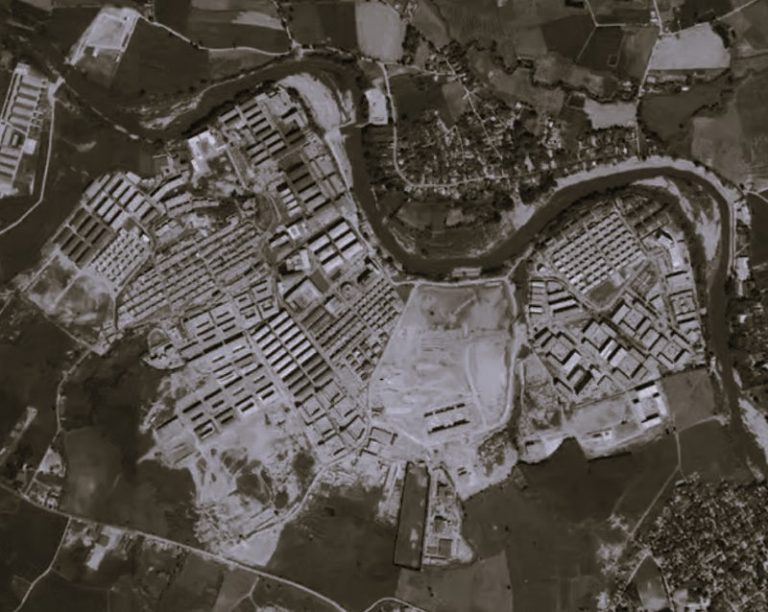
The Canaanites were the people who inhabited the land of what is now Israel and Palestine before the Israelites took it over, towards the end of the second millennium BCE.
By Peter Britton
The Disguises of History


The Phoenicians, famous as the traders and sailors who contributed so much to early Greek civilization, were in reality Canaanites. The great cities of Tyre and Sidon, and before them Byblos and Ugarit, were Canaanite cities located on the Mediterranean coast of what is today Lebanon.
The Enemies of Rome

Later, the Canaanites appear in yet another guise, as the Carthaginians. Carthage had originally been a Phoenician (therefore Canaanite) colony, located on the north coast of Africa. It had grown into a great maritime power, and as such, posed a major threat to the expanding power of Rome. Two great wars (and a third rather smaller affair) were fought between Rome and Carthage for dominion in the western Mediterranean region.
Three Peoples – or One
So, three ancient peoples – the Canaanites, the Phoenicians, and the Carthaginians – were in fact a single people. The fact that they seem to figure in what appears to us such completely different historical contexts – first in early Old Testament narratives, then in early Greek semi-legend, finally as the arch-enemies of the Romans – is as much a function of our compartmentalisation of the past as it is of historical reality. The Bronze Age Levant, early Greek history and the history of the middle Roman Republic appear to us as quite distinct – and very different – historical stages. Indeed, until historiography became broader in its terms of reference in recent decades, these three settings were studied by competely different groups of scholars.
What we are dealing with, though, is a single ethnic group and its culture which, through trade and settlement, spread over a wide area and appeared in history under different names and playing different roles. But in all these cases they were represented, not in their own writings, but in those of rivals and enemies.
A Culture of Horror and Creativity
They therefore appear in history in a largely negative light. All cultures have good points and bad points – hardly surprisingly, really, given that they are all made up of human beings. The culture of the Canaanites was no exception.
Barbaric Practices
Most notably, their religious practices seem to have been horrific. They included the sacrifice of infants, apparently by the terrible method of committing them alive to the flames of their gods. Such was the widespread nature of this practice amongst the people of the Canaan that one of the main points of an early story in the Bible (Genesis 22), in which the Hebrew patriarch Abraham is prevented by Yahweh (the Israelite God) from sacrificing his son Isaac to him, is to underpin the point that Yahweh does not require infant sacrifice. Such a story would not surely have been necessary if this barbaric practice was not prevalent.
The Romans too, a millennium later, were horrified by the Carthaginian religious practices; and the sacrifice of infants seems to appear in the archaeological record, in the mass burial of tiny bodies in special Carthaginian cemeteries.
A Major Contribution to Human Progress
But the Canaanite culture seems also to have been a creative and enterprising one. It made very significant contributions to human progress. Above all, in the middle centuries of the second millennium BC, the Canaanites developed the earliest form of alphabet.
The Canaanite alphabet may well have had Egyptian roots, but was certainly the first true alphabetical script. It seems to have been widespread within Canaanite society by the end of the second millennium, and with the rise of the great Canaanite (a.k.a. Phoenician) trading cities of Tyre and Sidon, they spread this form of script around he Mediterranean world. The Canaanite alphabet thus became ancestral to the Lydian, Greek, Etruscan and Roman (Latin) alphabets. These in turn gave rise to the western European alphabet, and to the Cyrillic alphabet of eastern Europe.

But that was by no means all. The Israelites took over the script of the Canaanites to develop the Hebrew alphabet, in which the Jewish Bible (Christian Old Testament) was written. To the north, the Aramaean peoples who settled northern Canaan and Syria at the turn of the millennium also took over the Canaanite alphabet. Their Aramaic alphabet became the standard script for everyday transactions within the Assyrian Empire, and then in the Babylonian and Persian empires. Thus it spread right across the Middle East, evolving further into the Arabic, Syriac (particularly associated with the Christian communities of the region), and Sanskrit scripts. From the latter it became ancestral to the alphabets used in the multiplicity of South Asian languages.
Given the advantages of alphabetic systems over other forms of writing, the Canaanite contribution to human progress can therefore be seen as a formidable one.
What Happened to Them after They Were Famous?
But what of the Canaanites themselves? What became of them?
Destruction and Assimilation
Starting with the Carthaginians, after their final defeat by the Romans in 146 BC, their city was destroyed and its inhabitants either killed or sold into slavery. By then, however, many descendants of Carthaginian colonists were living in cities scattered around the western Mediterranean. All of these were in due course conquered by the Romans, but, like most defeated cities, were incorporated as self-governing communities into the Roman Empire. Many of their inhabitants eventually gained Roman citizenship and some of their leading families joined the Roman ruling classes as knights and senators. In 193 AD, a man of probably Carthaginian descent, Septimius Severus, became Roman emperor (and one of the most significant ones at that).
The Ups and Downs of History
The great Phoenician cities of Tyre and Sidon experienced their ups and downs, (Tyre was razed to the ground by Alexander the Great’s troops in 332 BC), and were gradually subsumed into the Hellenistic culture of the 3rd, 2nd and 1st centuries BC. They continued on into Roman times and later, changing their culture and religion according to the ebbs and flows of history.
Genetic Survival
As for the Canaanites of the Canaan, well, there are plenty of their descendants around today. They are called Jews. For, although the Bible tells us that the Israelites were commanded by God to “drive out” the inhabitants of Canaan from the land, the Bible also tells us that they did no such thing. The two peoples settled down side by side with one another. Gradually the Israelite culture prevailed – in fits and starts, but infant sacrifice died out, thankfully – and intermarriage created a single people of them. The Canaanite genetic pool has survived to this day.
Originally published by TimeMaps of World History, republished with permission for educational, non-commercial purposes.







